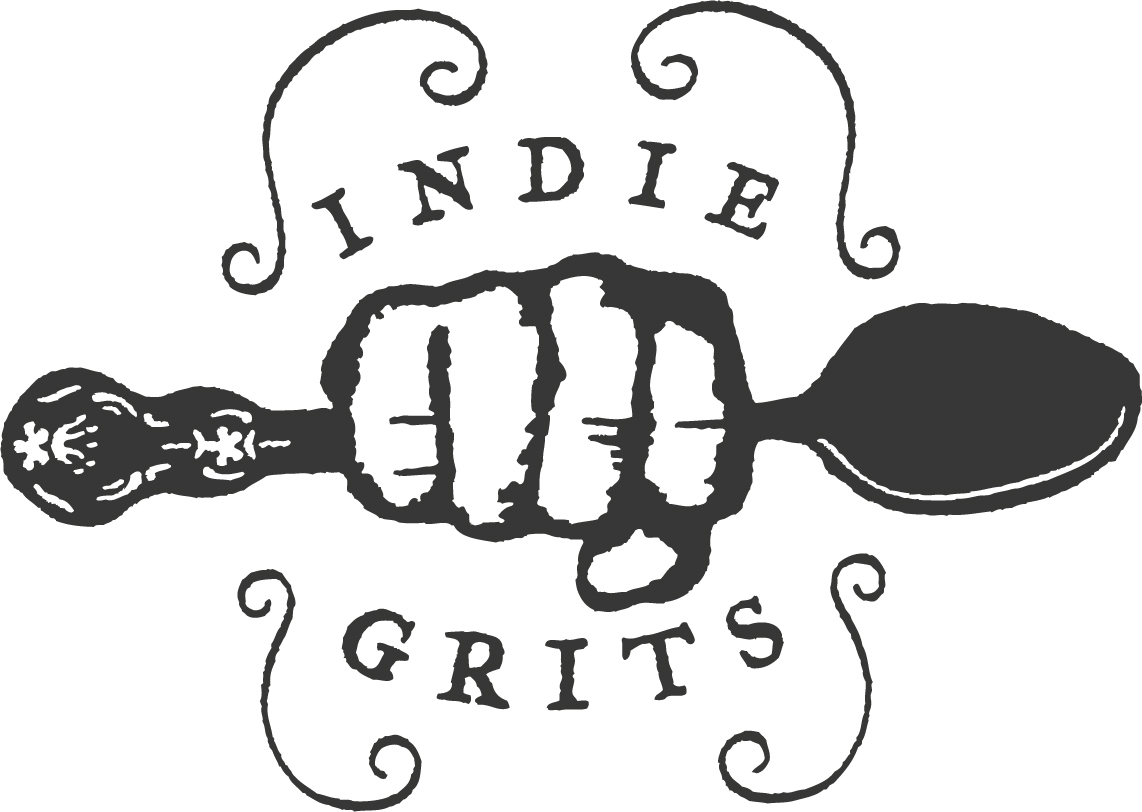The entire cast carries you through the film, but Bickel’s tongue-in-cheek record store comedy turned blood-soaked escape film pays off in a great way that I haven’t seen in any level of filmmaking in quite some time.
Mike Amason stars as Pater Noster in Pater Noster and the Mission of Light
Simply put, Chris Bickel knows how to hit you in the face with his movies. His third micro-budget indie feature, Pater Noster and the Mission of Light, is a wonder of what pure will, a solid vision, dedication from indie-film lovers, new technology, and a load of talent can create in the current indie-film world. An end card after the credits states that Pater Noster and the Mission of Light was made in West Columbia for what you can buy a used car for. Bickel gives that number as $20,000. Every dollar of that budget ends up on the screen along with pints of blood and sweat from a crew that found a labor of love, and a cast that is both seasoned and practically pulled off the street.
On the surface Pater Noster and the Mission of Light is a cult film. Pater Noster and the Mission of Light is a 70s religious group that has been off-the-grid for decades. What they do have is a slightly sought after catalogue of self-produced music that is worth a lot of cash to collectors. That’s how we meet Max, played by newcomer Adara Starr. Max works at the local indie record shop when a local vinyl trader tries to cash in one of his Pater Noster records and not so subtly mentions that he has a secret spot where more of the Pater Noster catalog sit. Max sweet talks and slips the collector a few bucks and hits the store herself, hoping to cash in. Max does find the stash and heads back to the record shop with her PNATMOL find.
After bragging to store owner Sam, played perfectly sly and bitter by Bickel regular Morgan Shaley Renew and her co-worker and friend Abby, played smartly by another familiar face to Bickel films Sanethia Dresch, Max and Abby head to Max’s house to get high and soak in the Pater Noster find. Later, the co-workers hit a blood-soaked show featuring a local thrash metal band “Lunacide,” filled in by Columbia area band and Metal Blade recording artist Demiser. Filling out the group of friends is Gretchen and Lunacide drummer Jay Sin, played by Shelby Lois Guinn and Josh Outzen, respectively. Bickel’s curation of this group is a great homage to past horror film friend group dynamics. The friends head back to Max’s for a post-show afterparty. Max finds a mutual Pater Noster lover in Jay Sin and the Mission of Light mystery grows from there. With a brilliant cameo by the saxophone swinging 80s film icon Tim Cappello as Dennis Waverly, a conspiracy filled radio host leaning heavily on Art Bell, the friends get a stern warning of swimming in the Pater Noster pool. Moments later, another mysterious call is received from supposed Pater Noster surrogates, and the next morning the friends are in a car being chauffeured to the Pater Noster compound.
He mixes his blood with the blood spilled later in the film.
Bickel wastes no time getting his group of friends, and the audience, into the meat of the white robed, smile just a bit too wide, Pater Noster welcoming committee and their compound. Soon getting us in front of reclusive Pater Noster himself. Mike Amason plays Pater Noster, and brilliantly chews every line of dialogue Bickel gives him through to the end of the film. Once the friends enters the interior of the Pater Noster compound, that’s when Bickel starts cocking his fist further back, readying it for the audience’s face.
Pater Noster and the Mission of Light’s greatest strength is Bickel’s growth as a filmmaker and growing chops as an editor. His willingness to inject a fair amount of tongue-in-cheek humor in the first half of the film also loosens up the audience for the bloodbath to come. He mixes his personal experiences working in a local indie record store with locally known Columbia fixtures, name play, and street addresses that will only resonate with locals. This makes the movie better because it adds Bickel’s personal roots with his loosely fictional settings and characters in the films. He mixes his blood with the blood spilled later in the film.
Adara Starr stars as Max in Pater Noster and the Mission of Light
As the film gets into its 20th minute, the pacing seems to slow a bit- not boring, but methodical. Make no mistake Pater Noster is a micro budget B-Movie, but Bickel doesn’t rush the story. With B films there is pressure to get the blood before the eyes of the audience as soon as possible. And that audience is quick to give up and walk away. Bickel does a fantastic job of allowing us to know what we need to know with each of the characters as we get to the first level of the last act.
Technology is the other advantage Bickel has with his third film. The visual look of the first half of the film is what it needs to be, nothing fancy, straightforward. There is no pretention here. When we move into the insanity of the third act, Bickel starts to flex the experience he has gained from his previous two features. Losing his Director of Photography two weeks prior to the first shoot day, Bickel took control of the camera himself. For a movie with a decent budget this can be incredibly stressful, for an indie horror feature with a 20k budget and 100 or so volunteers, off and on, crew members, you lose years off your life.
Visually the last act is a bit of a marvel. Lit just enough to set the tone but not distract, the direction and camera work create an atmosphere of insanity. Bickel’s slow(ish) pacing at the top of the film is balanced with a frenetic pacing at the end. Somehow, he makes this digestible. Add a soundtrack of aural horror and everything blends into a beautifully psychotic escape sequence by those left alive. He successfully takes the audience into the maddening world that Capello’s radio host warns us about. Yes, there is blood. Gallons more than in previous Bickel films. But as the deaths mount when the Pater Noster cult reveals their true intentions, and their naked bodies, the audience can only grip their seats tighter and move closer to the screen. I viewed the film at a private screening with a small audience of 25 or so. We all gleefully soaked it in with the slyest grins on our face.
A last-minute addition for the lead role, Adara Starr brilliantly turns Max from a cherub faced 20 something into a Carrie-esque crazed young woman over the film’s 90 or so minutes. All other supporting friends make the most of their life-or-death moments with no fear. Intentional or not, Bickel’s casting of the round-faced Starr contrasts her beautifully against her sharply featured friends.
This is the type of indie movie that is possible now. The camera that Bickel used is affordable to everyone. It allows capturing beautiful images in low light. It allows a filmmaker with Bickel’s experience and talent to create the horrific moments he makes in this film. Would a larger budget have served him well, of course. But how much larger? These movies aren’t made for a wide audience. They certainly are made with a pure love and Bickel’s love for the medium is caked all over Pater Noster. You can see Tobe Hooper and the Texas Chainsaw Massacre here. You can see some Rosemary’s Baby mixed in with Friday the 13th, even a taste of Clerks (if unintentional). And you can imagine the many gruesome horror titles that Bickel knows, and we don’t, that he is wearing on his sleeve at every part of the production process.
Morgan Shaley Renew, Adara Starr, and Shelby Lois Guinn in Pater Noster and the Mission of Light
Pater Noster and the Mission of Light is a wild punch in the face of a horror film, and I suggest seeing it no matter your taste in movies. It’s a testament to the new way filmmakers can make the film they love in the city or town they live in. The entire cast carries you through the film, but Bickel’s tongue-in-cheek record store comedy turned blood-soaked escape film pays off in a great way that I haven’t seen in any level of filmmaking in quite some time.
The Nickelodeon’s indie film roots no longer exist in this city and it is time to seek other outlets.
Pater Noster and the Mission of Light has its world theatrical premiere at the Independent Picture House in Charlotte on October 5th. The film is mixed in 5.1 Dolby Digital surround sound. It will stream on Night Flight during the month of October.
The film features a soundtrack created by musicians local to Columbia, South Carolina. Prior to the film’s release, Bickel premiered music videos for each song of the soundtrack. These videos will be available on the Blue Ray release in 5.1 Dolby. An 18-minute short film prequel will also be included on the Blue Ray.
Pater Noster and the Mission of Light is premiering in Charlotte, North Carolina and not Columbia. The Charlotte premiere is due to the Nickelodeon Theatre, located on Main Street in downtown Columbia and Bickel’s preferred theatre for the premiere, not being able to find time in their schedule to screen the film. There has been a lot of back and forth through social media about this situation, and reasonable arguments can be made from both sides.
As an independent filmmaker who has made his living as a filmmaker in Columbia for 25 years, my take is simple. You can’t be taken seriously as a supporter of independent filmmakers and independent films in the city you operate if you don’t have a plan in place to screen local filmmakers and their work at a reasonably short moment’s notice.
No film on the Nickelodeon’s current schedule starts past 9:30pm. Pater Noster is a perfect midnight film. The first showing in Charlotte, 100 miles away, sold out in a few hours. The Nickelodeon has deep roots in the independent film community in this city. It is where most local filmmakers, including myself, first saw their work on a theater screen. The Nickelodeon staff should be seeking out and celebrating local filmmakers. The answer should not be “we won’t have room for a few months” but should be “we will make this work.” I would gladly like to pop my head in to a 9:30 screening of Beetlejuice 2 on an upcoming Monday screening to count heads. The Nickelodeon’s indie film roots no longer exist in this city and it is time to seek other outlets.







